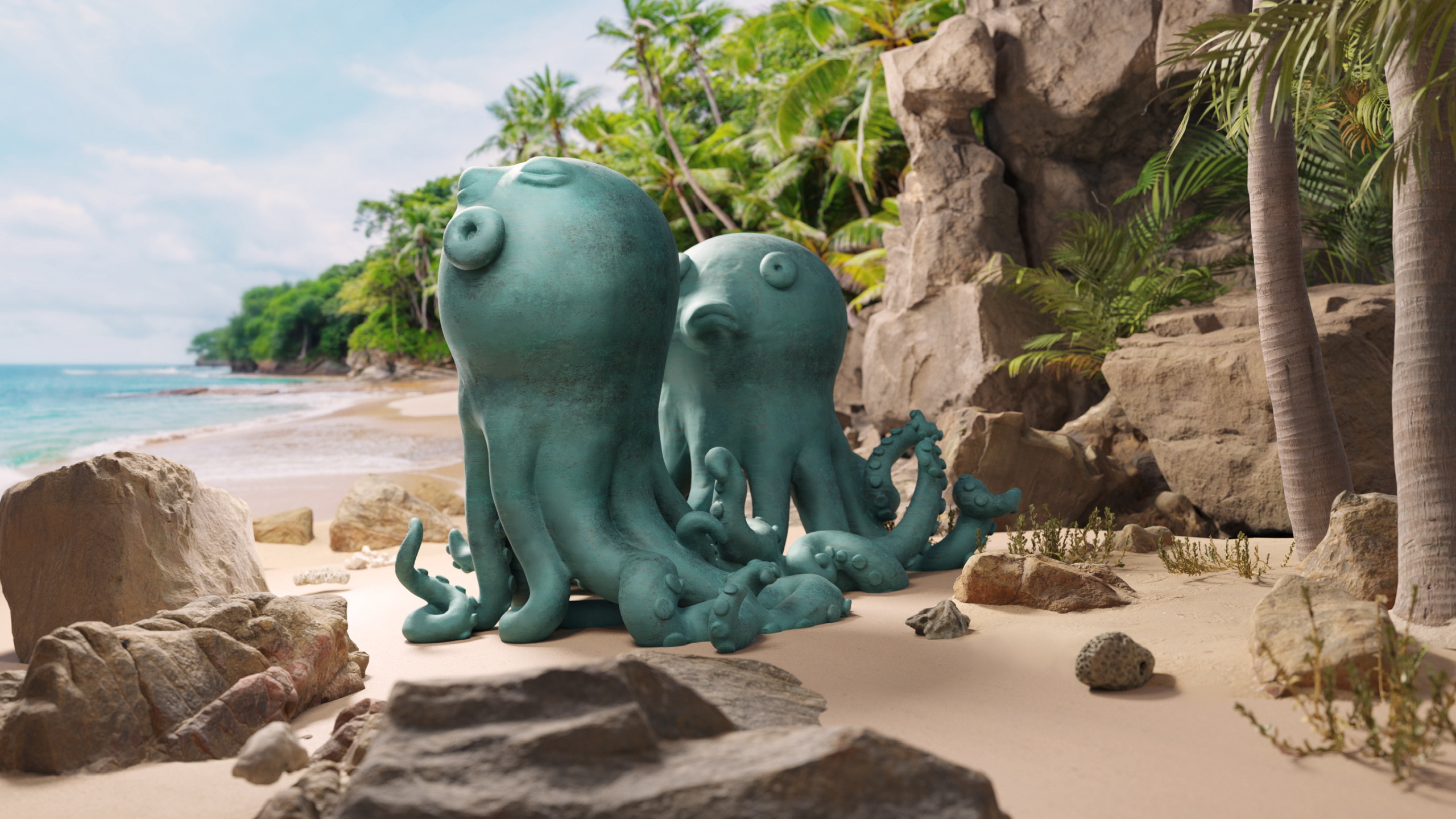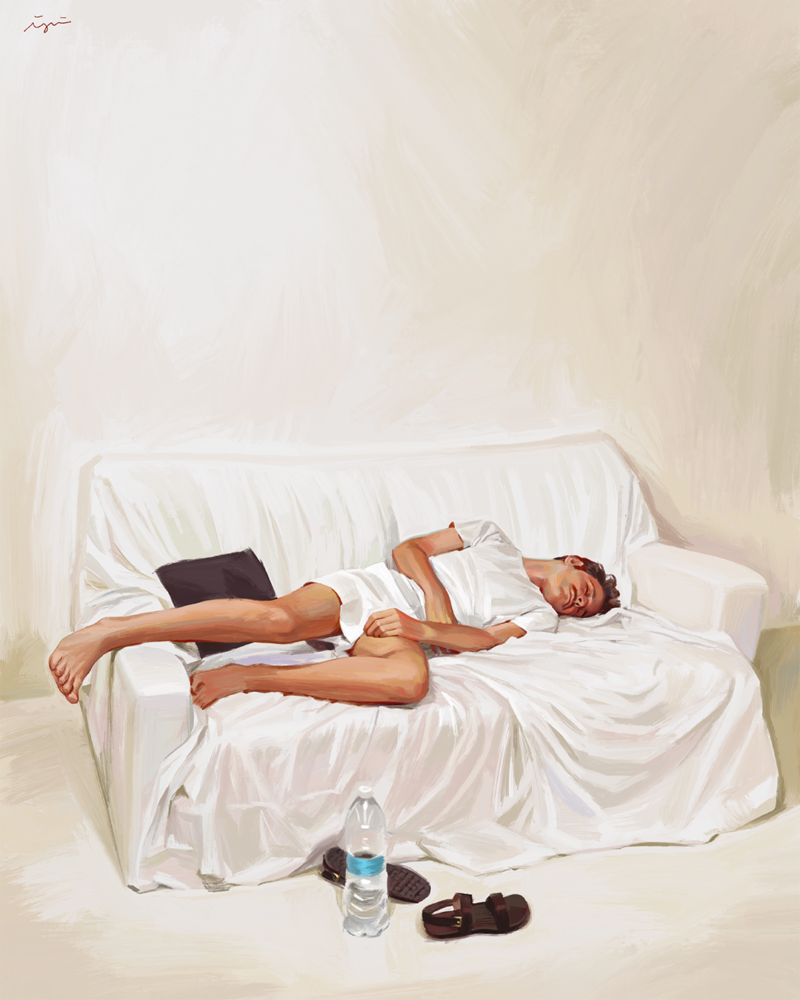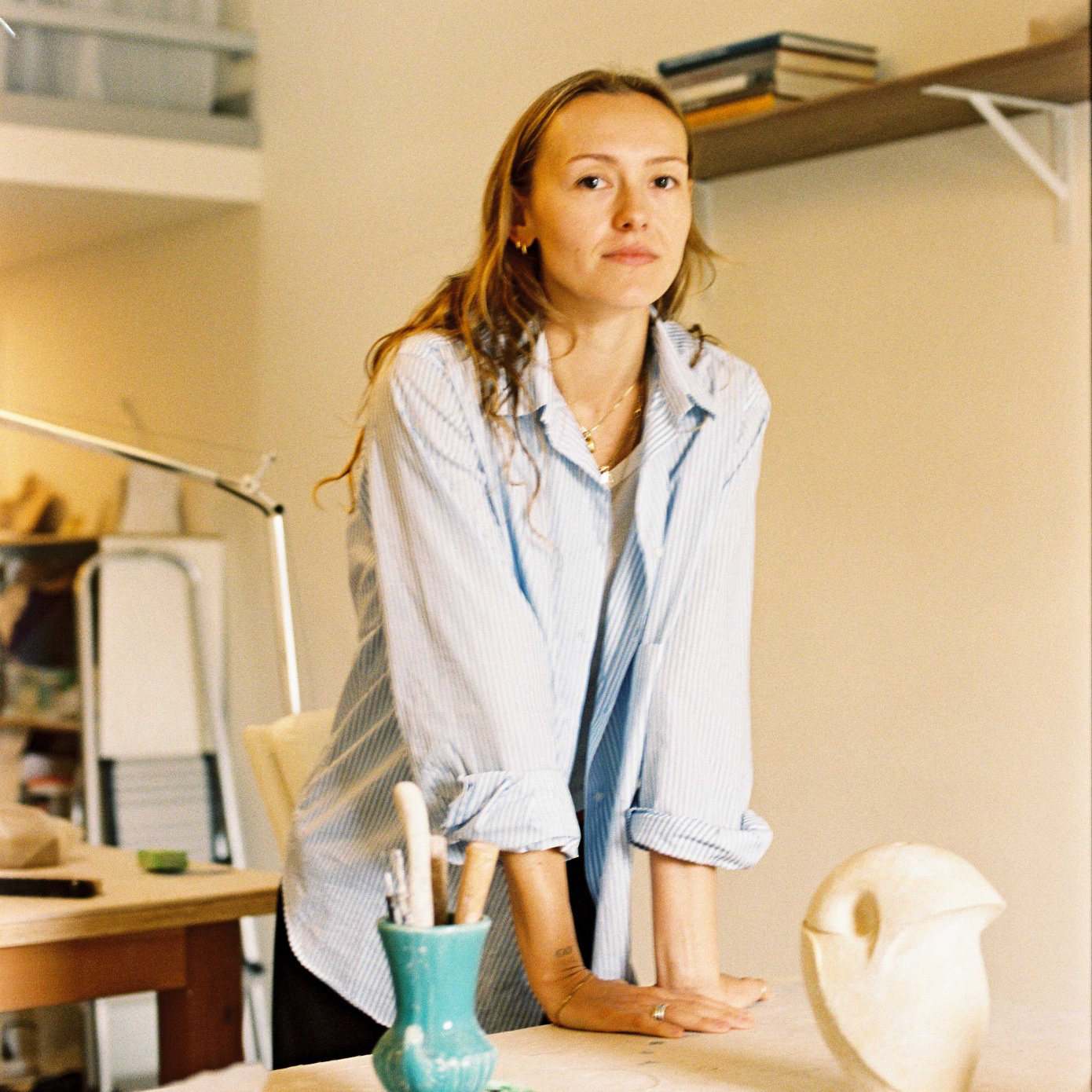
“At first it was just watching movies and working on airplanes, and then Simon kept telling me I should try drawing on it,” Nikolai Haas says. “It took me a second to get the hang of it but once I did, I couldn’t stop. Now, I have over 8500 drawings in the cloud. That should give you some sense of how much time I spend on it.” The Haas Brothers, Simon and Nikolai, have been using the iPad as a critical tool for expanding the reach of their erotic, cartoonish world, which over the past five years has become a sought-out household aesthetic in the contemporary art and design scenes. It is hard for an Architectural Digest profile to pass without noticing a set of bronze horns or paws in a corner—the telltale sign that their handiwork is present and lurking. Human touch is an enigmatic characteristic in furniture and sculpture and, to my surprise, I learn that not all their shapes are necessarily “organic.” In their practice, the iPad is not just utilized as a drafting tool; it is also where work gets finished. “We both love objects whose origins are mysterious and it is within the past year or so that I think the iPad and the Pencil have reached this level, where you can draw something on the tablet and then arrive at a finished object that does not betray the fact that it was computer generated,” Simon says. “Once it broke through that ceiling, it became maybe our most valuable tool.”
We play “Fuck, Marry, Kill” and the iPad fairs better than I expect, as it is both loved and desired. The Haas Brothers admire not only the iPad’s mobility and flexibility as a tool but also its touch and its responsiveness, which they liken to a good veggie burger. “It’s the kind of vegan that doesn’t try to make itself taste like meat. It knows it’s not a piece of paper or a pencil and it’s comfortable with that,” Nikolai says. “It has its own touch.”

Simon and Nikolai aren’t the only artists enamored with Apple’s now decade-old tablet. Since its debut, the iPad has become a critical tool for creatives of all stripes (read: not just David Hockney, although he remains one of our favorite iPad painters). For instance, we have a soft spot for Gucci favorite and now Bulgari collaborator Ignasi Monreal, who created our Alessandro Michele cover for our Spring 2019 issue. For the globe-trotting illustrator, the iPad has replaced the need for a computer; it is his whole world. He too is a fan of the feeling of the Pen and what it makes possible in his work. “It’s the ultimate freedom,” Monreal says. “It’s a tool that feels like it was made for me and I was not an easy convert. In fact, my first iPad was a gift from my mother.”
The unexpected utility of the tablet is a recurring theme when speaking to those who swear by it. It is one of those lucky lovers who seems to cultivate need out of the blush of the desire. Juanpa Zurita, the Youtuber comedian and filmmaker, surprises me when he shares that his most frequented application is not the native platform that made him internet famous but rather my favorite Apple product: Notes. For me, it’s a diary; for Zurita, it’s a sketchbook. “I always loved to write by hand but I stopped doing it for efficiency purposes: having a notebook and pen with me at all times was not practical,” Zurita explains. “With the iPad’s sensitivity to handwriting, I was able to go back to it. There is something powerful about writing with your hand.” A no-fuss extension with ultimate peripatetic potential, the iPad has full stop replaced Zurita’s laptop. Everything he needs to produce his videos occurs on its sleek surface. “There is something friendly and accessible about the way it feels,” Zurita says lovingly, as if describing a friend rather than a product. And, in the midst of COVID, it’s easy to understand why the most valuable thing the iPad has added to the creative landscape over the past decade is its investment in the intimacy of touch.




